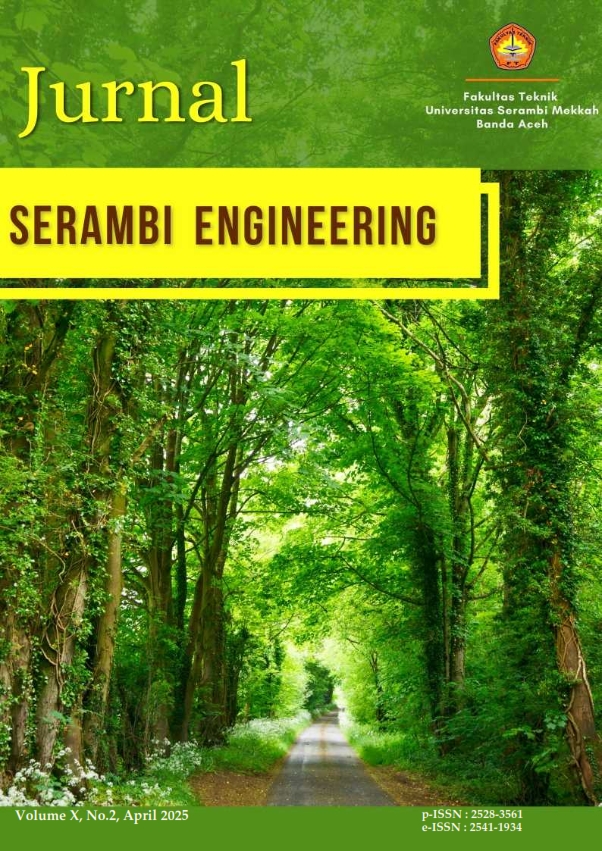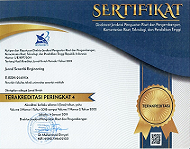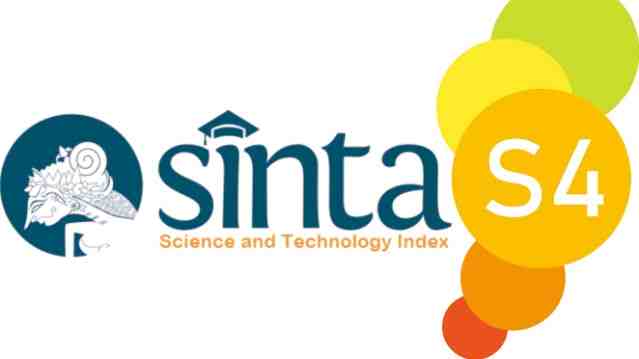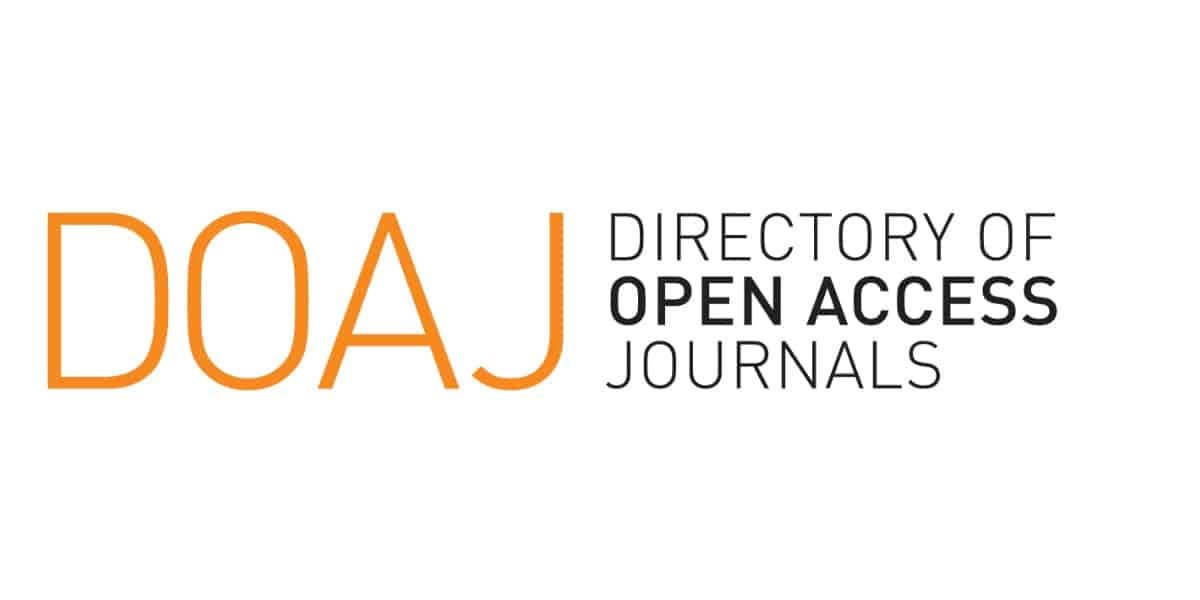Kontribusi Limbah Kayu Daratan terhadap Sampah Laut di Pesisir Selatan Bali: Tinjauan Antropogenik dan Strategi Adaptasi Berbasis Ekosistem
Keywords:
wood waste; marine debris; climate change; Bali; waste management; circular economy; ecosystem adaptationAbstract
The recurring accumulation of marine debris along the southern coast of Bali, particularly wood fragments and plastic waste, reflects the complex interaction between land-based human activities, climate change, and coastal oceanographic dynamics. This study aims to examine the potential contribution of terrestrial wood waste to marine debris in major tourist areas such as Kuta and Kedonganan beaches. The research applies a combined method of direct field observation during the west monsoon season and a comprehensive literature review, including secondary data on waste composition, ocean currents, and terrestrial waste management systems. Observations indicate that Kuta Beach is predominantly affected by wood debris such as branches and tree trunks while lighter plastic packaging is more common in areas like Kedonganan, suggesting that current strength influences the distribution of waste types. Analysis of household waste composition in several Bali districts reveals that wood and branch waste form a significant portion, particularly in Jembrana, Bangli, and Buleleng, supporting the hypothesis that much of the marine wood debris originates from upstream land-based sources via river systems. Intensified rainfall and riparian degradation—driven by land-use change and climate variability accelerate the transport of organic waste to the sea. This study recommends integrated ecosystem-based adaptation strategies, including lignolytic microbial decomposition, the installation of floating booms at river mouths, and the conversion of wood waste into circular economy products such as biochar through pyrolysis and wood-plastic composites.
References
[1] C. Godswill and C. Gospel, “Impacts of Plastic Pollution on the Sustainability of Seafood Value Chain and Human Health,” Int. J. Adv. Acad. Res. | Sci., vol. 5, no. 11, pp. 2488–9849, 2019.
[2] A. K. Mishra, J. Singh, and P. P. Mishra, “Microplastics in polar regions: An early warning to the world’s pristine ecosystem,” Sci. Total Environ., vol. 784, p. 147149, 2021, doi: https://doi.org/10.1016/j.scitotenv.2021.147149.
[3] M. B. Alfonso et al., “Assessing threats, regulations, and strategies to abate plastic pollution in LAC beaches during COVID-19 pandemic,” Ocean Coast. Manag., vol. 208, p. 105613, 2021, doi: https://doi.org/10.1016/j.ocecoaman.2021.105613.
[4] I. W. K. Suryawan, I. M. J. Sianipar, and C.-H. Lee, “Community importance-performance preferences and policy adaptiveness in marine debris management: A case study from the Komodo Subdistrict, Indonesia,” Mar. Policy, vol. 174, p. 106592, 2025, doi: https://doi.org/10.1016/j.marpol.2025.106592.
[5] I. W. K. Suryawan and C.-H. Lee, “Importance-performance dynamics and willingness to pay in coastal areas for climate-adaptive marine debris management,” Reg. Stud. Mar. Sci., p. 103596, 2024, doi: https://doi.org/10.1016/j.rsma.2024.103596.
[6] N. Ulhasanah et al., “Exploratory factors in community-based adaptation strategies for managing marine microplastics,” Reg. Stud. Mar. Sci., vol. 82, p. 104015, 2025, doi: https://doi.org/10.1016/j.rsma.2025.104015.
[7] S. Suhardono, T. T. T. Phan, C.-H. Lee, and I. W. K. Suryawan, “Design strategies and willingness to pay for circular economy service policies in sustainable tourism,” Environ. Challenges, p. 101081, 2025, doi: https://doi.org/10.1016/j.envc.2025.101081.
[8] J. Jambeck et al., “the Ocean : the Ocean :,” Mar. Pollut., vol. 347, no. 6223, pp. 768-, 2015, [Online]. Available: https://science.sciencemag.org/CONTENT/347/6223/768.abstract
[9] M. M. Sari et al., “Plastic pollution in the surface water in Jakarta, Indonesia,” Mar. Pollut. Bull., vol. 182, p. 114023, 2022, doi: https://doi.org/10.1016/j.marpolbul.2022.114023.
[10] N. Ulhasanah et al., “Characterization of Microplastics in Jakarta’s Urban Downstream and Estuary Water Bodies,” Ecol. Eng. Environ. Technol., vol. 25, no. 11, pp. 260–273, 2024, doi: 10.12912/27197050/192678.
[11] M. Wajdi, R. Christiani, N. G. A. K. T. Purnama, K. Novitriana, N. P. A. S. Putri, and K. A. D. Putri, “Hidden beauty of honeymoon beach: a potential attraction for tourists (a review of a tourism object),” J. Commer. Manag. Tour. Stud., vol. 2, no. 1, pp. 42–47, 2023.
[12] K. Maclean, E. A. Weideman, V. Perold, and P. G. Ryan, “Buoyancy affects stranding rate and dispersal distance of floating litter entering the sea from river mouths,” Mar. Pollut. Bull., vol. 173, p. 113028, 2021.
[13] Kementerian Lingkungan Hidup dan Kehutanan, “Sistem informasi Pengelolaan Sampah Nasional.” [Online]. Available: http://sipsn.menlhk.go.id
[14] N. Annisa, H. Prasetia, and Q. Sholihah, “Potential of carbonized rice husk as a filter media rain garden to decrease the turbidity of water and Coli bacteria in the Stormwater Runoff. a review of current research,” IOP Conf. Ser. Mater. Sci. Eng., vol. 1011, no. 1, p. 12013, 2021, doi: 10.1088/1757-899X/1011/1/012013.
[15] I. W. K. Suryawan, S. Suhardono, V. V. Nguyen, and C.-H. Lee, “Importance-Performance Evaluation of Coral Reef Conservation in Advancing the Bioeconomy of Marine Tourism in Bali, Indonesia,” Aquat. Conserv. Mar. Freshw. Ecosyst., vol. 35, no. 3, p. e70085, Mar. 2025, doi: https://doi.org/10.1002/aqc.70085.
[16] E. S. Sofiyah, S. Suhardono, B. Ridhosari, A. D. Nastiti, and I. W. K. Suryawan, “Community Participation in Urban Sanitation Programs at Koja, Jakarta, Indonesia,” J. Kesehat. Masy., vol. 20, no. 3, pp. 619–632, 2025.
[17] E. S. Sofiyah, B. Ridhosari, S. Suhardono, C.-H. Lee, and I. W. K. Suryawan, “Impact of COVID-19 on Subjective Well-being and Community Im-portance-Performance in Sanitation Programs in Jakarta, Indonesia,” in Forum Geografi, 2025, pp. 64–78.
[18] A. Rahman, I. W. K. Suryawan, S. Suhardono, V. V. Nguyen, and C.-H. Lee, “Determinants of electric vehicle adoption in urban and peri-urban areas,” Energy Sustain. Dev., vol. 85, p. 101664, 2025, doi: https://doi.org/10.1016/j.esd.2025.101664.
[19] B.-C. Yang, C.-H. Lee, and I. W. Koko Suryawan, “Consumers’ willingness to pay and importance-performance gaps for resilient e-waste management in Taiwan,” J. Clean. Prod., p. 144313, 2024, doi: https://doi.org/10.1016/j.jclepro.2024.144313.
[20] S. Suhardono, C.-H. Lee, and I. W. K. Suryawan, “Valuation of marine integrated disaster management amidst global warming in Southern Coast of Java, Indonesia,” Mar. Pollut. Bull., vol. 211, p. 117446, 2025, doi: https://doi.org/10.1016/j.marpolbul.2024.117446.
[21] D. Porshnov, V. Ozols, L. Ansone-Bertina, J. Burlakovs, and M. Klavins, “Thermal decomposition study of major refuse derived fuel components,” Energy Procedia, vol. 147, pp. 48–53, 2018, doi: https://doi.org/10.1016/j.egypro.2018.07.032.
[22] D. N. Rasquinha, “Manning the mangroves: gender, regional identities, and social history shape mangrove forest dependence and governance,” Ecol. Soc., vol. 29, no. 1, 2024, doi: 10.5751/ES-14809-290117.
[23] H. Rahimi, M. L. Sattler, M. D. S. Hossain, and J. L. M. Rodrigues, “Boosting landfill gas production from lignin-containing wastes via termite hindgut microorganism,” Waste Manag., vol. 105, pp. 299–308, 2020, doi: https://doi.org/10.1016/j.wasman.2020.02.007.
[24] S. Suhardono, C.-H. Lee, and I. W. K. Suryawan, “Trends in citizen influencing willingness to participate in marine debris management and social well-being in Bali metropolitan, Indonesia,” Urban Gov., 2024, doi: https://doi.org/10.1016/j.ugj.2024.12.005.
[25] I. W. K. Suryawan and C.-H. Lee, “Green transition management: The key role of community participation in developing resilient waste management policies for coastal and inland communities,” Environ. Sci. Pollut. Res., 2025, doi: 10.1007/s11356-025-36185-x.
[26] I. W. K. Suryawan, S. Suhardono, and C.-H. Lee, “Boosting beach clean-up participation through community resilience hypothetical scenarios,” Mar. Pollut. Bull., vol. 207, 2024.
[27] N. Akhtar, M. I. Syakir Ishak, S. A. Bhawani, and K. Umar, “Various Natural and Anthropogenic Factors Responsible for Water Quality Degradation: A Review,” 2021. doi: 10.3390/w13192660.
[28] D. Deb, P. Schneider, Z. Dudayev, A. Emon, S. S. Areng, and M. M. Mozumder, “Perceptions of Urban Pollution of River Dependent Rural Communities and Their Impact: A Case Study in Bangladesh,” 2021. doi: 10.3390/su132413959.
[29] P. Astawa, “Seasonal Waste Management in the Southern Coasts of Bali, Indonesia,” J. Indones. Sustain. Dev. Plan., vol. 3, no. 1, pp. 95–100, 2022.
[30] J. W. Tuahatu, Y. A. Noya, and G. D. Manuputty, “Plastic pollution on the beaches of outer Ambon Bay,” IOP Conf. Ser. Earth Environ. Sci., vol. 584, no. 1, p. 12058, 2020, doi: 10.1088/1755-1315/584/1/012058.
[31] A. R. Hastuti, F. Yulianda, and Y. Wardiatno, “Distribusi spasial sampah laut di ekosistem mangrove Pantai Indah Kapuk, Jakarta,” Bonorowo Wetl., vol. 4, no. 2, pp. 94–107, 2014, doi: 10.13057/bonorowo/w040203.
[32] J. S. Silva-Cavalcanti, J. D. B. Silva, E. J. de França, M. C. B. de Araújo, and F. Gusmão, “Microplastics ingestion by a common tropical freshwater fishing resource,” Environ. Pollut., vol. 221, pp. 218–226, 2017, doi: https://doi.org/10.1016/j.envpol.2016.11.068.
[33] N. P. Purba et al., “Marine debris in Indonesia: A review of research and status,” Mar. Pollut. Bull., vol. 146, pp. 134–144, 2019, doi: https://doi.org/10.1016/j.marpolbul.2019.05.057.
[34] S. Lincoln et al., “Marine litter and climate change: Inextricably connected threats to the world’s oceans,” Sci. Total Environ., vol. 837, p. 155709, 2022, doi: https://doi.org/10.1016/j.scitotenv.2022.155709.
[35] S. Lincoln et al., “A regional review of marine and coastal impacts of climate change on the ROPME sea area,” Sustainability, vol. 13, no. 24, p. 13810, 2021.
[36] A. Gkanasos et al., “Stopping macroplastic and microplastic pollution at source by installing novel technologies in river estuaries and waste water treatment plants: the CLAIM project,” Front. Mar. Sci., vol. 8, p. 738876, 2021.
[37] M. He, Z. Xu, Y. Sun, P. S. Chan, I. Lui, and D. C. W. Tsang, “Critical impacts of pyrolysis conditions and activation methods on application-oriented production of wood waste-derived biochar,” Bioresour. Technol., vol. 341, p. 125811, 2021, doi: https://doi.org/10.1016/j.biortech.2021.125811.
[38] E. C. Emenike et al., “Advancing the circular economy through the thermochemical conversion of waste to biochar: a review on sawdust waste-derived fuel,” Biofuels, vol. 15, no. 4, pp. 433–447, Apr. 2024, doi: 10.1080/17597269.2023.2255007.
[39] A. Maaoui et al., “Assessment of pine wood biomass wastes valorization by pyrolysis with focus on fast pyrolysis biochar production,” J. Energy Inst., vol. 108, p. 101242, 2023, doi: https://doi.org/10.1016/j.joei.2023.101242.
[40] M. J. Ahmed et al., “Lignocellulosic bioplastics in sustainable packaging – Recent developments in materials design and processing: A comprehensive review,” Sustain. Mater. Technol., vol. 41, p. e01077, 2024, doi: https://doi.org/10.1016/j.susmat.2024.e01077.
[41] M. M. Alam, A. Greco, Z. Rajabimashhadi, and C. Esposito Corcione, “Efficient and environmentally friendly techniques for extracting lignin from lignocellulose biomass and subsequent uses: A review,” Clean. Mater., vol. 13, p. 100253, 2024, doi: https://doi.org/10.1016/j.clema.2024.100253.
[42] I. Utama, I. N. Suardhana, I. G. Sutarya, and N. P. D. Krismawintari, “Assessing the impacts of overtourism in Bali: Environmental, socio-cultural, and economic perspectives on sustainable tourism,” Tour. Divers. Dyn., vol. 1, no. 2, pp. 10–56578, 2024.
[43] S. Pérez-Contreras, D. A. Avalos-de la Cruz, M. A. Lizardi-Jiménez, J. A. Herrera-Corredor, O. Baltazar-Bernal, and R. Hernández-Martínez, “Production of Ligninolytic and Cellulolytic Fungal Enzymes for Agro-Industrial Waste Valorization: Trends and Applicability,” 2025. doi: 10.3390/catal15010030.
[44] A. D. Behera and S. Das, “Ecological insights and potential application of marine filamentous fungi in environmental restoration,” Rev. Environ. Sci. Bio/Technology, vol. 22, no. 2, pp. 281–318, 2023, doi: 10.1007/s11157-023-09655-2.
[45] M. Mohan et al., “Restoring Riparian Ecosystems During the UN-Decade on Ecosystem Restoration: A Global Perspective,” Anthr. Sci., vol. 1, no. 1, pp. 42–61, 2022, doi: 10.1007/s44177-022-00009-1.
Downloads
Published
Issue
Section
License
Copyright (c) 2025 I Wayan Koko Suryawan (Author)

This work is licensed under a Creative Commons Attribution 4.0 International License.

















